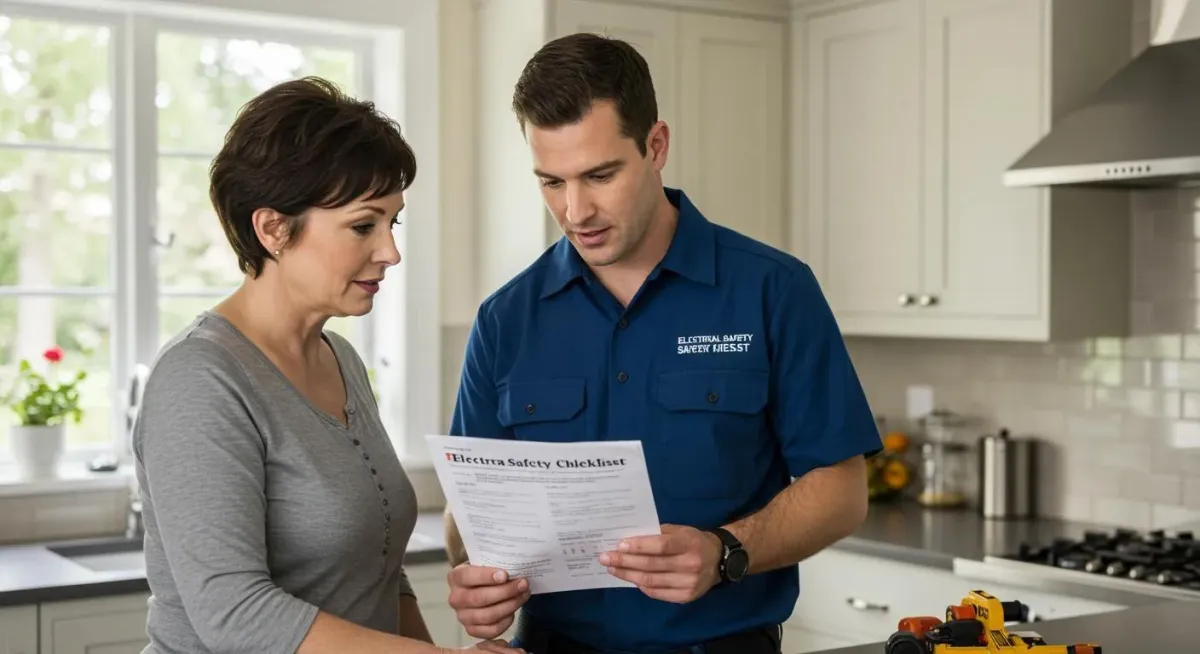
Stay Safe at Home: Top Electrical Safety Tips for Homeowners
Homeowner Electrical Safety Tips: Essential Checklist and Inspection Advice for Preventing Hazards
Electrical safety isn’t just a concern for older homes—it’s a must for every Ontario homeowner. From overloaded circuits to aging wiring, even small issues can lead to serious hazards like electrical fires, shocks, and power surges. That’s why staying informed, proactive, and prepared is essential.
At B-Line Electrical Services, we’ve built our reputation on protecting homes across Ontario with licensed, expert service. Whether you’re scheduling a home inspection, upgrading safety devices, or dealing with frequent breaker trips, our residential and commercial electrical services are designed to keep your home running safely and efficiently. Want to learn more about who we are? Visit our About Us page to meet the team behind B-Line’s trusted name.
This guide will walk you through a homeowner’s electrical safety checklist—complete with inspection advice, safety device recommendations, and tips for spotting warning signs early. Let’s empower you to make safer choices at home, one outlet at a time.
1. What Are the Key Electrical Safety Checklist Items Every Homeowner Should Know?
A home electrical safety checklist is your first line of defense against hidden hazards. It ensures your systems and devices are operating safely and efficiently.
How to Identify Common Electrical Hazards in Your Home
Look for these red flags:
Flickering lights or frequently tripped circuit breakers
Warm or discolored outlets
Buzzing sounds from switches or appliances
Frequent bulb burnouts
These are all signs of faulty wiring or overloaded circuits—two of the most common causes of electrical fires in homes.
Which Safety Devices Should Be Included in Your Electrical Checklist?
Install and regularly test these critical components:
GFCI outlets, especially near kitchens, bathrooms, and outdoor areas
AFCI breakers to detect arc faults that can lead to fires
Surge protectors for electronics and appliances
Smoke alarms on every floor and near bedrooms
Regular GFCI outlet testing and smoke alarm checks are among the most effective ways to prevent fire hazards at home.
How Often Should You Update Your Electrical Safety Checklist?
A seasonal approach works best—perform a routine inspection for home electrical systems at least twice a year. It’s also essential to revisit your checklist during:
Home renovations
After electrical storms
When selling or buying a home
2. How Can Home Electrical Inspection Tips Help Prevent Electrical Fires?
Routine inspections are the cornerstone of electrical hazard prevention and an essential part of your home electrical safety routine.
What Are the Signs of Electrical Problems to Watch for During Inspections?
Look for:
Outlets that don’t hold plugs securely
Breakers that frequently trip without cause
A burning smell near outlets or wiring
Outdated two-prong outlets in older homes
These issues often point to deeper wiring concerns or a need for upgraded circuit breakers and should never be ignored.
How Do Certified Electricians Conduct a Thorough Home Electrical Inspection?
Professional electricians follow a detailed process:
Electrical panel inspection for loose connections or corrosion
Wiring evaluation for frayed or outdated wires
Load testing to ensure your system can handle your home's energy demand
Code compliance checks based on current standards
B-Line Electrical Services offers licensed inspections that align with Ontario’s residential electrical safety codes—ideal for identifying risks before they become emergencies.
When Should You Schedule a Home Electrical Inspection?
Schedule a full inspection:
If your home is over 25 years old
Before purchasing or listing a property
After major appliance installations
If you notice any of the warning signs listed above
3. What Are the Best Practices for the Safe Use of Extension Cords and Power Strips?
Extension cords and power strips are convenient, but when misused, they can quickly become fire hazards. Following best practices ensures you’re using these tools safely and within your home’s electrical limits.
How to Choose the Right Extension Cord for Your Home Needs
Choose cords that match the power demands of your devices. Look for:
UL-listed or CSA-certified cords for safety assurance
Heavy-duty, grounded cords for high-wattage appliances
The appropriate length—avoid excessively long cords that can tangle or overheat
What Are the Common Mistakes to Avoid When Using Extension Cords?
Avoid these common but dangerous missteps:
Running cords under rugs or furniture, which can cause heat buildup
Daisy-chaining multiple extension cords or power strips
Using indoor cords for outdoor applications
Keeping cords plugged in when not in use
These mistakes increase the risk of overheating, electrical shock, or fire.
How Can You Safely Manage Power Strips and Prevent Overloads?
Only plug in low-wattage devices like chargers or lamps. Never connect:
Microwaves
Space heaters
Hair dryers
These high-wattage devices should always be plugged directly into wall outlets. Regularly check strips for signs of wear or fraying.
4. What Are the Most Common Signs of Electrical Problems in Your Home?
Knowing the warning signs of electrical issues can help you take quick action before a small issue becomes a major hazard.
How to Recognize Flickering Lights and Frequent Circuit Breaker Trips
These symptoms often indicate:
Overloaded circuits
Loose wiring
Faulty light fixtures or switches
If your breaker trips regularly, it’s not something to ignore—it’s your system warning you that it can’t handle the current safely.
What Does a Burning Smell or Warm Outlets Indicate?
A burning smell—especially near outlets or your electrical panel—is a red flag for:
Overheating wires
Loose connections
Arcing inside the wall
Warm or discolored outlets also signal danger and may require immediate professional attention.
How to Detect Damaged or Exposed Wiring Safely
Visually inspect cords and wiring:
Look for frayed sheathing or exposed copper
Listen for crackling sounds behind walls or near switches
Never touch damaged wiring—turn off the breaker and call a licensed electrician from B-Line Electrical Services
5. How Can Homeowners Prevent Electrical Fires Through Simple Safety Measures?
Electrical fires are one of the top causes of home damage and personal injury—but with a few proactive steps, most are completely preventable.
What Are the Top Causes of Electrical Fires in Residential Homes?
Faulty or outdated wiring
Overloaded circuits
Improper use of space heaters or kitchen appliances
Extension cord misuse
Older homes are especially at risk if they haven’t been upgraded to meet modern power demands.
How to Maintain Electrical Appliances and Wiring to Reduce Fire Risk
Unplug small appliances when not in use
Keep cords away from high-traffic areas
Have your panel, outlets, and wiring inspected annually
Replace worn-out cords or devices
Preventative maintenance and awareness go a long way in fire prevention.
What Role Do Smoke Detectors and Fire Extinguishers Play in Electrical Fire Safety?
Smoke detectors are your first alert system. Install them:
On every floor
Outside sleeping areas
In rooms with electrical equipment
Test them monthly and replace batteries annually. Keep a fire extinguisher rated for electrical fires (Class C) in accessible locations—especially near kitchens and garages.
6. What Electrical Safety Products Should Every Homeowner Consider Installing?
Keeping your home safe from electrical hazards isn’t just about routine inspections—it also requires the right safety devices. Here are essential products that should be part of your home electrical safety checklist.
How Do GFCI Outlets Protect Against Electrical Shock?
Ground Fault Circuit Interrupters (GFCIs) are designed to shut off power immediately if they detect an imbalance in electrical current, which can occur when electricity flows through water or a person. These outlets are especially critical in areas near moisture—such as bathrooms, kitchens, garages, and outdoor spaces. Regular GFCI outlet testing ensures they function correctly and offer ongoing protection from electrical shocks.
What Are AFCI Breakers and Why Are They Important?
Arc Fault Circuit Interrupters (AFCIs) detect arcing faults in wiring—one of the leading causes of electrical fires in homes. These devices break the circuit when unsafe electrical arcs occur, helping with electrical fire prevention at home. They're now standard in new home construction and highly recommended for older properties undergoing electrical upgrades.
When Should You Use Surge Protectors to Safeguard Your Electronics?
Power surges, whether from lightning strikes or fluctuations in the grid, can destroy electronics. Surge protector use is essential for expensive or sensitive devices such as televisions, computers, and gaming systems. Consider whole-home surge protectors for more comprehensive protection, especially if your area experiences frequent storms or outages.
7. How Can You Respond Safely to Electrical Emergencies at Home?
Being prepared for an electrical emergency can make all the difference in preventing injuries or minimizing property damage.
What Steps Should You Take if You Suspect an Electrical Fire?
If you see smoke, sparks, or detect a burning smell from an outlet or appliance, turn off the power immediately if it’s safe to do so. Never use water to extinguish an electrical fire. Instead, use a Class C fire extinguisher and call emergency services. These steps are key parts of emergency preparedness for electrical hazards.
How to Safely Turn Off Power During an Electrical Emergency
Knowing how to shut off your home’s power at the electrical panel is essential. Label circuit breakers clearly so you can act quickly. If you’re unsure which breaker to flip, turn off the main breaker to cut power to the entire house. Practicing circuit breaker safety and labeling breakers properly should be part of your home electrical safety routine.
When Is It Necessary to Call a Professional Electrician?
If you notice signs of faulty wiring, such as warm outlets, tripped breakers, or flickering lights, it’s time to call a licensed electrician. Emergencies like partial outages, electrical shocks, or burning smells require immediate professional attention. Avoid DIY fixes—electrical safety in older homes or complex systems should always be handled by certified professionals.
Frequently Asked Questions
1. What’s the difference between a GFCI and a regular outlet?
A GFCI shuts off power when it senses an imbalance, reducing the risk of electrical shock, especially near water sources.
2. Can I install a surge protector at the panel myself?
It’s best to leave panel-based surge protector installation to professionals for proper grounding and compliance with local codes.
3. Are smoke alarms connected to electrical safety?
Yes—smoke alarms play a crucial role in early detection of electrical fires and should be tested monthly for safety assurance.
4. What should I do if an outlet feels warm or makes noise?
Unplug anything connected to the outlet and contact an electrician. These are classic signs of faulty wiring or overloads.
5. Should I upgrade outlets in an older home?
Absolutely. Electrical safety in older homes often requires modern outlets, GFCIs, and a system-wide inspection to meet current safety standards.
Conclusion
Maintaining electrical safety at home isn’t a one-time task—it’s a proactive routine that involves using the right equipment, staying alert to warning signs, and knowing when to call in the experts. From GFCIs and AFCIs to surge protection and fire safety awareness, small upgrades can have a big impact on preventing hazards. If you're in Woodstock, ON and need help with electrical inspections, emergency service, or routine upgrades, B-Line Electrical Services is here to help. Our certified electricians prioritize your safety and peace of mind.
For fast, licensed support, contact B-Line at +1 519-532-1181 or email [email protected] to schedule your electrical safety consultation.


